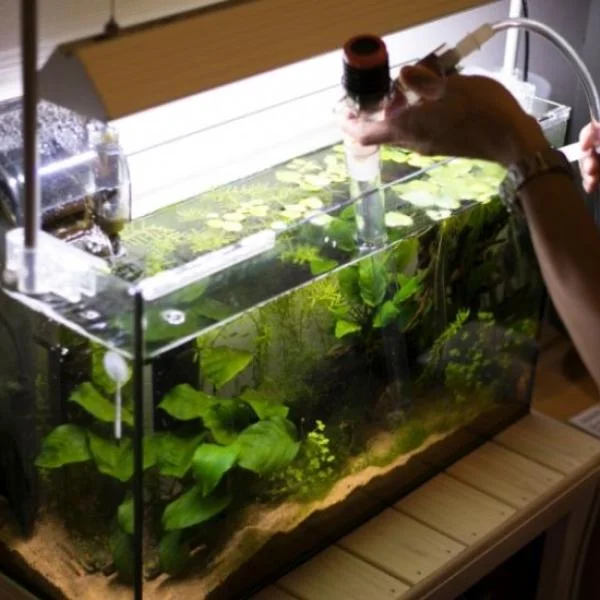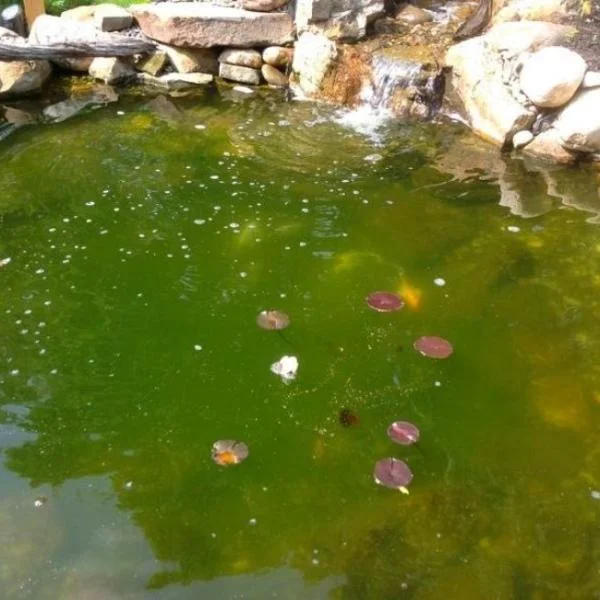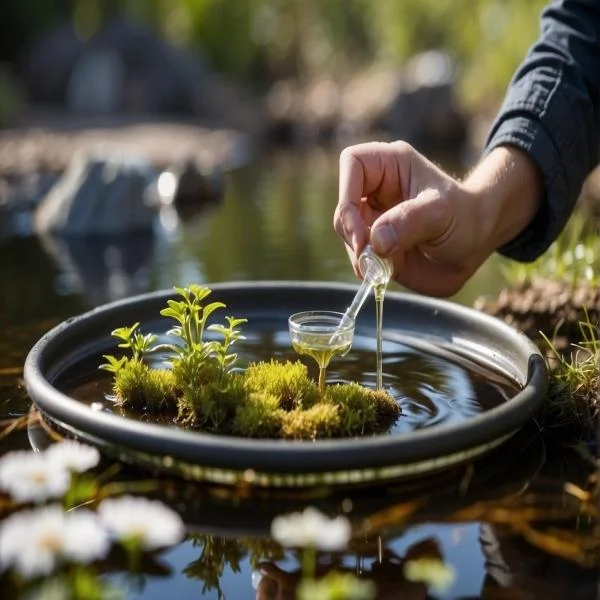
Algae blooms represent one of the most significant challenges facing our aquatic ecosystems today. These rapid proliferations of algae in water bodies pose serious threats to environmental health, human safety, and economic stability, with reports of freshwater harmful algal blooms increasing significantly over the past 40 years, now affecting all 50 states in the US.
What Are Algae Blooms?
Algae blooms occur when microscopic algae or algae-like bacteria multiply rapidly in water bodies, creating visible colonies. These organisms are naturally present in aquatic environments, including salt water, fresh water, and brackish water, and use photosynthesis to produce energy from sunlight, just like plants. The excessive algal growth becomes visible to the naked eye and can transform water bodies into green, blue-green, red, or brown colors, depending on the type of algae present.
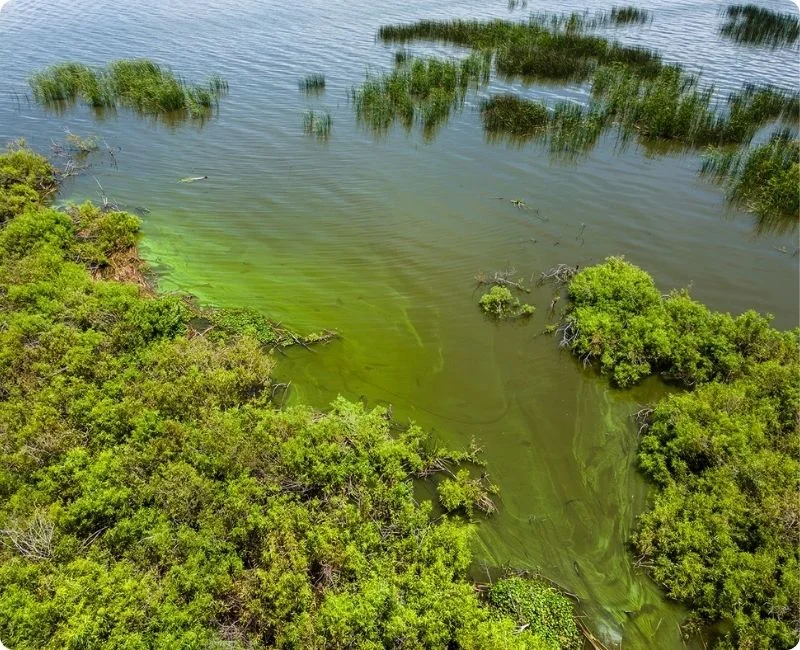
What Are Algae Blooms?
The Scientific Explanation for Harmful Algal Blooms
Harmful Algal Blooms (HABs) are a significant environmental and public health issue that arise when specific types of algae, often phytoplankton, grow excessively in bodies of water and produce toxins. These blooms can develop rapidly under favorable conditions, including warm temperatures, high nutrient levels from agricultural runoff or wastewater, and stagnant water.
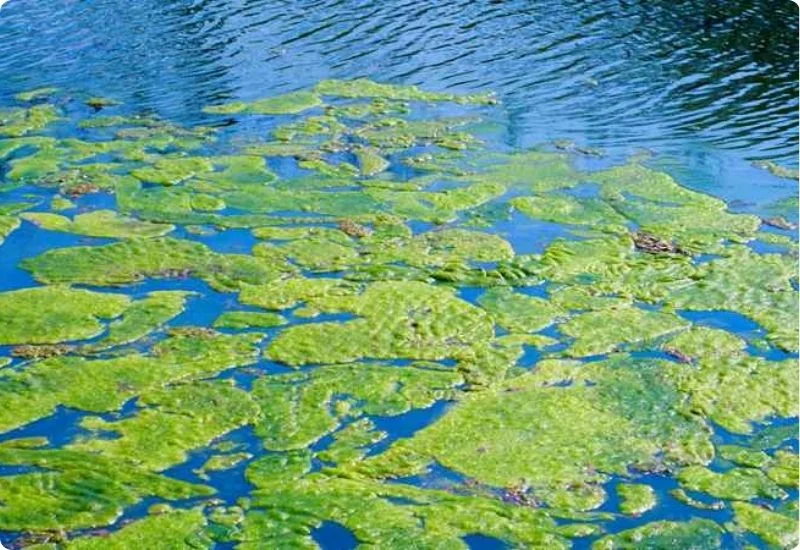
The Scientific Explanation for Harmful Algal Blooms
While some HABs create visible discoloration, often appearing as red, green, or brown patches on the water surface, others are more insidious, growing near the bottom of water bodies where they remain unseen. This hidden growth can make it challenging to identify a bloom, especially since visual inspection alone cannot confirm the presence of harmful toxins. The toxins produced by these algae can contaminate water and air, posing risks to human and animal health. Exposure can lead to severe health consequences such as respiratory issues, liver damage, and even neurological effects. HABs also disrupt ecosystems, leading to fish die-offs and threatening biodiversity by depleting oxygen levels and blocking sunlight essential for aquatic plants.
Common HAB Organisms and Their Effects
Organism | Water Type | Color | Toxin | Health Effects |
Alexandrium sp. | Salt | Red/brown | Saxitoxins | Gastrointestinal issues, neurological symptoms |
Cyanobacteria | Fresh | Blue-green | Cylindrospermopsin | Nausea, liver failure |
Gambierdiscus | Salt | Orange | Ciguatoxins | Digestive problems |
Karenia brevis | Salt | Red | Brevetoxins | Respiratory issues, muscle cramps |
Pseudo-nitzschia | Salt | Red/brown | Domoic acid | Seizures, memory loss |
Microcystis | Fresh | Blue-green | Microcystin | Liver damage |
Primary Causes of Algae Blooms
1. Nutrient Pollution
The primary driver of algal blooms is excess nutrients, particularly nitrogen and phosphorus, entering water bodies through various sources. According to EPA's most recent surveys, nutrient pollution affects more than one-third of lakes and about half of all rivers and streams in the United States. This pollution comes primarily from agricultural runoff, including animal manure and chemical fertilizers, urban stormwater runoff, and discharges from wastewater treatment facilities.
2. Environmental Conditions
Specific environmental conditions create perfect breeding grounds for algal blooms. Warm water temperatures give cyanobacteria a competitive advantage, allowing them to grow faster than more benign algae. Additionally, slow-moving or stagnant water can become thermally stratified, creating a layer of warm water that floats on top of cooler water, further promoting algal growth.
3. Climate Change Impact
Climate change significantly exacerbates algal bloom conditions through multiple mechanisms. Rising global temperatures increase water temperatures, while more frequent and severe droughts create stagnant water conditions. Moreover, intense storms caused by climate change lead to increased nutrient runoff from agricultural lands and urban areas, providing more fuel for algal growth.
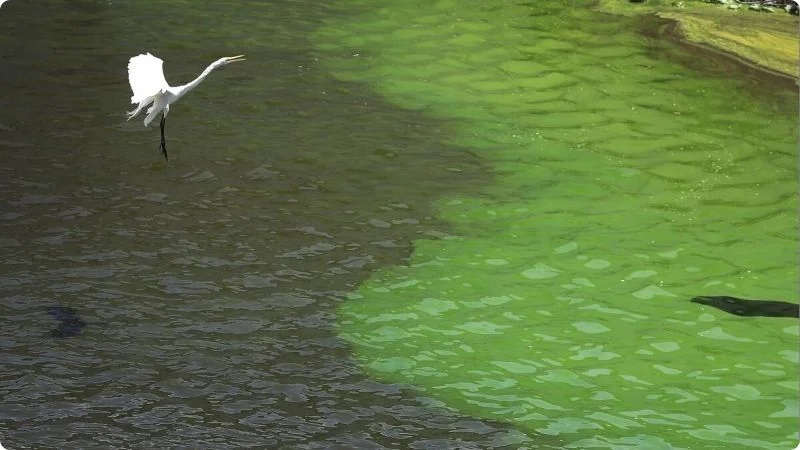
Climate Change Impact
Effects of Algal Blooms on The Environment and Economy
Environmental Impacts
The impact of algae blooms extends far beyond visible water discoloration. Algal decomposition consumes significant amounts of dissolved oxygen, leading to the formation of hypoxic zones that are uninhabitable for aquatic organisms. These dead zones have been reported in more than 166 locations nationwide, with the largest occurring in the northern Gulf of Mexico, spanning an area the size of Massachusetts.
Economic Consequences
The economic toll of algal blooms is substantial, with estimates suggesting freshwater blooms cost the United States approximately $4.6 billion annually. Single bloom events can devastate local economies - for example, a persistent algal bloom in an Ohio lake from 2009 to 2010 resulted in up to $47 million in lost local tourism revenue.
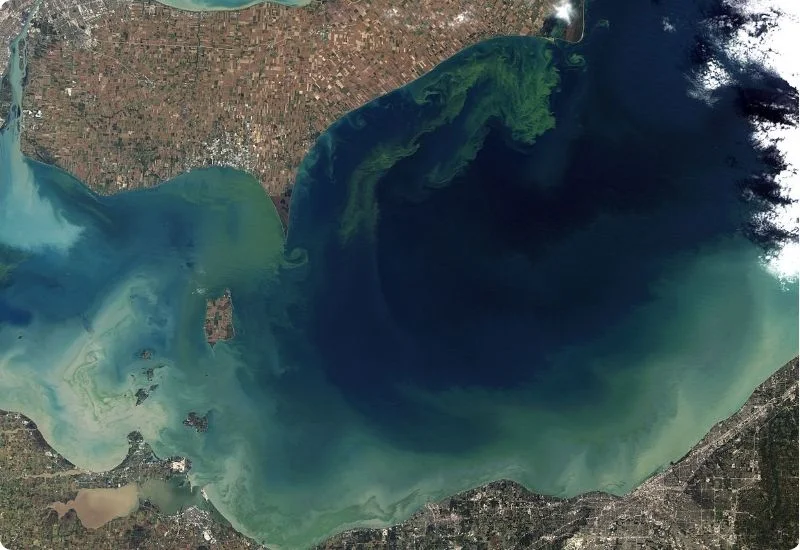
Effects of Algal Blooms on The Environment and Economy
Urgent Measures Needed to Prevent and Control Algae Blooms
Agricultural Solutions
Effective prevention starts with better farming practices. Regenerative practices that improve soil health help capture rain where it falls, preventing nutrient-packed runoff from entering water bodies. These practices include planting cover crops, diversifying crops, reducing tillage, and properly applying compost and manure according to best practices.
Urban Management
Cities can reduce their contribution to algal blooms through improved infrastructure. The EPA estimates that 10 trillion gallons of untreated stormwater washes off paved surfaces annually. Implementing green infrastructure solutions such as green roofs, tree planting, and rain gardens can help capture this runoff before it reaches waterways.
Public Policy Initiatives
Strong policy measures are essential for controlling algal blooms. This includes protecting wetlands, which act as natural filters to improve water quality, implementing water conservation measures, and developing comprehensive monitoring and response systems for HAB outbreaks.
Precautions to Take During an Algal Blooms
Algal blooms, especially those that contain harmful cyanobacteria, pose significant health risks. According to the World Health Organization, it’s essential to avoid areas with visible algae, scum, or foam since these often harbor concentrated toxins. Contact with such water can lead to skin irritations, respiratory issues, and, if ingested, potentially severe gastrointestinal distress. Recreational activities like waterskiing, swimming, or sailing in affected areas are particularly dangerous because they increase the risk of aerosolizing toxins, which can be inhaled.

Precautions to Take During an Algal Bloom
If exposure to algal blooms occurs, immediate washing or showering is recommended to remove any harmful particles from the skin, as these can cause rashes or other reactions. In addition, pets and children should be kept away from affected areas, as they are more likely to ingest water inadvertently. Taking these precautions helps mitigate the health risks posed by toxic algal blooms.
Conclusion
Algae blooms represent a complex environmental challenge that requires immediate attention and coordinated action. Through understanding their causes and implementing preventive measures, we can work to reduce their frequency and impact on our water systems. The combination of climate change impacts and increasing nutrient pollution suggests this problem will likely worsen unless significant steps are taken to address both immediate causes and underlying environmental factors.
Related Articles
What Can Biological Filtration Do for Your Pond?
Biological filtration represents a cornerstone technology in both natural ecosystem management and ...
The Importance of Proper Water Changes for Your Aquarium
In this comprehensive guide, we'll explore the importance of water changes , how to determine the ...
How to Change Pond Water to Keep Your Pond Pristine
Maintaining a well-balanced ecosystem in your pond is all about keeping water quality in check. One ...
What is Fungi? Exploring the Decomposers in Nature
Fungi represent a fascinating kingdom of organisms that includes approximately 144,000 known ...
How Do Algae and Fungi Differ From Each Other?
Algae and fungi are fascinating organisms that play crucial roles in our ecosystem, yet they possess ...
Tips for Reducing Ammonia in Pond to Keep Aquatic Life Healthy
Maintaining a healthy pond is crucial for the well-being of fish and other aquatic life, and one of ...


